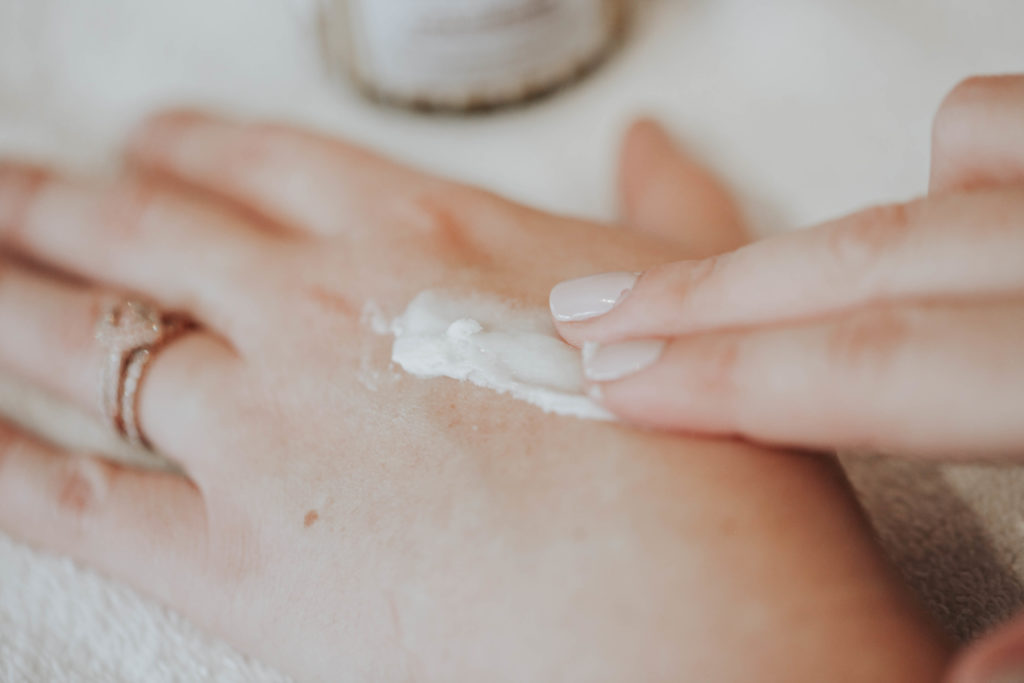
Avoid these Ingredients in your hand sanitizers.
The drying ingredients in hand sanitizer can quickly cause havoc on your skin because it disrupts the protective layer of oils on your skin. You can develop sensitivity, premature aging, sun spots, cracking, eczema and bleeding.
Most health officials say that soap and water is the best way to keep your hands virus-free, but when you’re entering a store or on the run and a sink is not nearby, hand sanitizers are the next best thing, experts say.
The drying ingredients in hand sanitizer can quickly cause havoc on your skin because it disrupts the protective layer of oils on your skin. You can develop sensitivity, premature aging, sun spots, cracking, eczema and bleeding. Yikes!
It is important to maintain the balance of your skin’s natural hydro-lipidic layer, especially on the hands – our first line of defence against bacteria and viruses.
If you have to use hand sanitizer (which most of us do right now) then be sure to have an all natural, hydrating hand cream in your bag, pocket or desk, so you can moisturize afterwards, and as soon as possible!

Here is a list of the top toxic ingredients you need to avoid in your hand sansitizer
Methanol:
Methanol can be lethal at fairly low doses: Ingestion of as little as 2 tablespoons (30 milliliters) of methanol can be deadly for a child, and 2 to 8 ounces (60 to 240 milliliters) can be deadly for an adult. Even if only applied to the skin, methanol can be absorbed and cause severe illness and nerve damage, according to Dr. William Banner, Medical Director of the Oklahoma Center for Poison and Drug Information and a past president of the American Association of Poison Control Centers. Topical methanol can be particularly dangerous for children, who have a greater ratio of skin surface area to body weight as compared with adults,
Benzene:
Exposure to benzene increases the risk of developing leukemia and other blood disorders.
Acetaldehyde:
Acetaldehyde causes damage at the cellular and genomic levels. The World Health Organization considers acetaldehyde to be a Class 1 toxin (human carcinogen). The main source of acetaldehyde is the consumption of alcohol. In vivo, ethanol is predominantly metabolized to acetaldehyde. However, there are many other sources of acetaldehyde, both natural and manufactured.
Acetal: Contact can irritate the skin and eyes. Breathing Acetal can irritate the nose and throat. High or repeated exposure to Acetal can cause headache, dizziness and drowsiness. Acetal is a FLAMMABLE LIQUID and a DANGEROUS FIRE HAZARD.
Benzene, Acetaldehyde and Acetal have all been banned by the FDA. Follow this link to learn more.
Concerns around fragrance are allergies/immunotoxicity, Endocrine disruption, Non-reproductive organ system toxicity, Ecotoxicology, and Irritation to the skin, eyes, or lungs.
1-Propanol:
Frequent use of hand sanitizer containing 1-propanol may cause eye, nose and throat irritation, as well as dry cracking skin, drowsiness and headache https://healthycanadians.gc.ca/recall-alert-rappel-avis/hc-sc/2020/73385a-eng.php
If you see any of the above ingredients in a hand sanitizer you’re considering purchasing, PUT IT DOWN immediately. I would even speak to the manager of the store to let them know they are selling toxic products. If we speak up, companies will listen and we will be provided with healthier choices.
Let’s treat our largest organ, our skin, and one of the best shields to keep us safe from outside infection, with nurturing, nourishing and supportive ingredients and products.
If you ever need help looking for a product or wonder what you can do to prevent and treat dry hands, send us a message, we are here to support you. Your skin’s health is our number one priority.
XO
Alexis
CEO Wildflower Spa